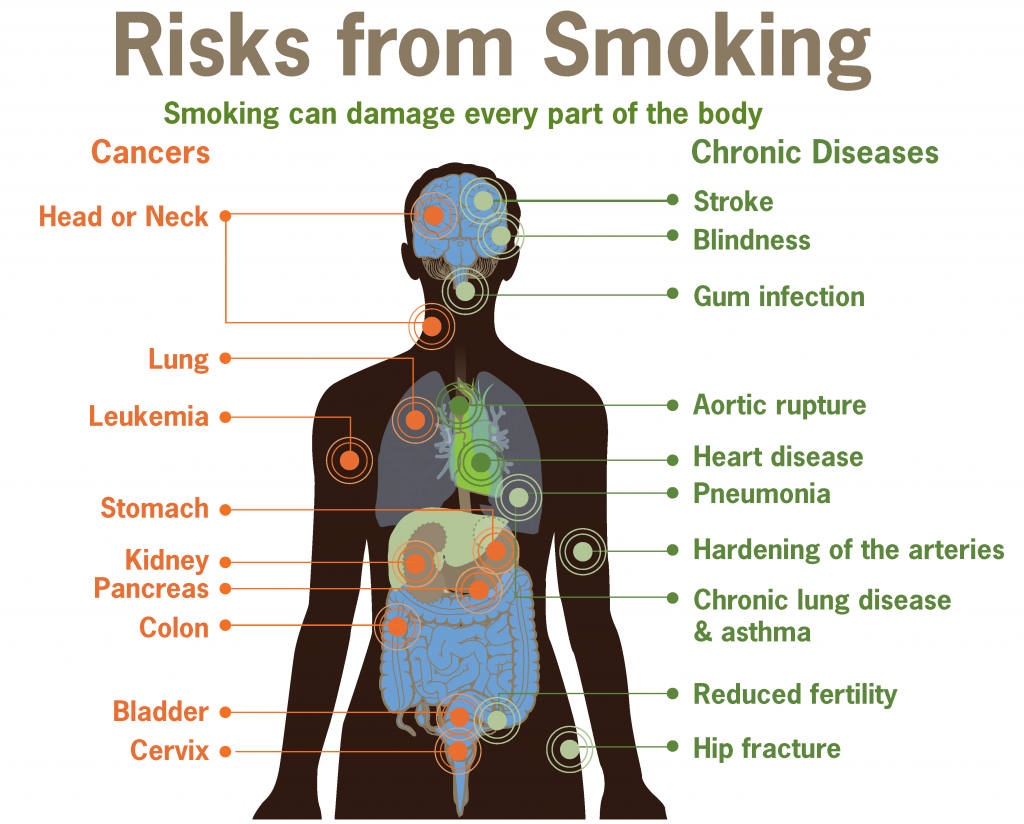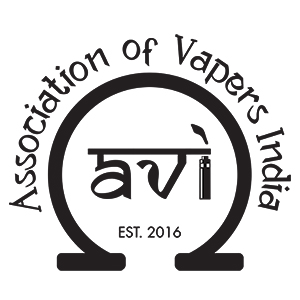Why Is Smoking Bad for You?
These are all things smokers and non-smokers alike hear about cigarettes from time to time. They heard it from their teachers, parents, and pretty much everyone else in charge of them. But what exactly is it that makes cigarettes bad for you? Let’s take a look.
Short-Term Damage
You will start to notice some changes right away as soon as you use cigarettes. Your fingers will yellow, your breath and hair and clothes will smell like smoke, and your teeth will stain. You may also develop a hacking cough and suffer many of the symptoms of allergies, such as runny nose, fever, itchiness and mucous buildup.
Long-Term Damage
Over time, all the problems above become much worse. Let’s start with the least awful problems.
The staining on your hands and teeth will worsen. Your fingers will start to shake when you need a cigarette. The cravings will be much more intense the longer you go without a cigarette; getting near others who are smoking or smell like smoke can also trigger cravings easily.

Smoker’s Cough: Why It Happens and How to Stop It
So you have a smoker’s cough? We feel you. Many of us deal or have dealt with it in the past and we understand how much it sucks.
How to Stop Smoker’s Cough
Having a smoker’s cough is actually a normal thing. It’s a sign that your body is trying to deal with what you’re doing to it and trying to heal itself. Our bodies always try to repair themselves, no matter what we do to them. You shouldn’t try to suppress a cough with cough medications because it has a very important purpose.
Although quitting smoking is the only way you can stop a smoker’s cough, but there are 6 quick ways you can help your body heal more effectively, relieve some of the irritation, and temporarily stop smoker’s cough. Some of the treatments you can do to feel a little better include the following:
- Drink enough water: Doctors and health experts always tell you to drink more water to help you manage all sorts of health conditions, from allergies to trying to lose weight. It turns out that drinking six to eight glasses of water a day is helpful in relieving smoker’s cough too because it thins out the mucus in your lungs and throat. Gargling with warm salt water can provide some comfort to an irritated throat.
- Just add honey: Adding a little honey to your tea or just consuming a teaspoon full of it plain can really soothe your throat – and it tastes good, too.
- Suck on throat lozenges: Traditional cough drops may reduce some of the irritation that leads to coughing, but any hard lozenge you need to suck on will have the same benefits. Vitamin C lozenges can provide the same relief to your throat but have the added bonus of vitamins that can boost your immune system: If you want one some Vitamin C lozenges you can check some out here or by clicking the picture on the right. (Bonus: these are cheap AND healthy…plus they taste so good!).
- Eucalyptus vapor in your room: Whether you steam eucalyptus or mint leaves over boiling water or put a humidifier in your room with a eucalyptus-based liquid like Vicks, these minty vapors can naturally help you breathe better for a while.
Smoker’s Lungs and How to Save Them
Most people know that smoking is really bad for your health. It affects nearly every organ in your body and increases your risk of developing various diseases, the risks of which go up the longer you smoke. But the one part of your body that is arguably the most affected by smoking is your lungs. Let’s take a closer look at what exactly a smoking habit does to your lungs.
Changes in Appearance
Because they’re continually pumped up with oxygen, normal and healthy lungs are plump and pink. They may not be pretty to look at, but they’re clean and pure. However, you can instantly recognize a smoker’s lungs on sight. Smokers’ lungs are black. The black color is because every time you inhale a cigarette, it deposits tar in your lungs. Over time and after smoking lots of cigarettes every day, enough tar deposits build up inside the bronchioles until it is distributed throughout the entire lungs. On top of that, you may have separate dark spots from smoking related pollution, too.

A Complete Guide to Chewing Tobacco: Effects, Addiction, and How to Quit
How to Quit Chewing Tobacco
If you answered yes to at least any three of these questions, consider yourself highly addicted. So, let’s start your tobacco chewing cessation right now.
Pick a Day
If you want to quit, then you are going to have to pick a quit date and stick to it. You can’t just say that you are going to start quitting and not have a date set in mind. That makes it too easy to fall back into your old habits simply because you didn’t make definite plans. If you set a date for yourself, you are more likely to put an honest effort in.
So set a date, but don’t make it harder on yourself than you need to be. Realize how addicted you are and give yourself some time before that date if you need it. If you have been chewing tobacco for a while now, then you will need to give yourself some time to slow down your usage and curb your cravings before you reach that quit date. You may want to plan ahead to have a quit date that is a few weeks or even a month from when you first decide you need to start quitting.
But what if you slip?
You shouldn’t slip in the first place after so much hard work, but in case you do, just get right back on track. Don’t consider one slip an excuse to start dipping again. If tobacco chewing has caused some physical damage to your body, don’t panic, just talk to your physician or dentist. Whatever you do to enjoy your new life, do it, just pledge that you’ll never take another dip again.

